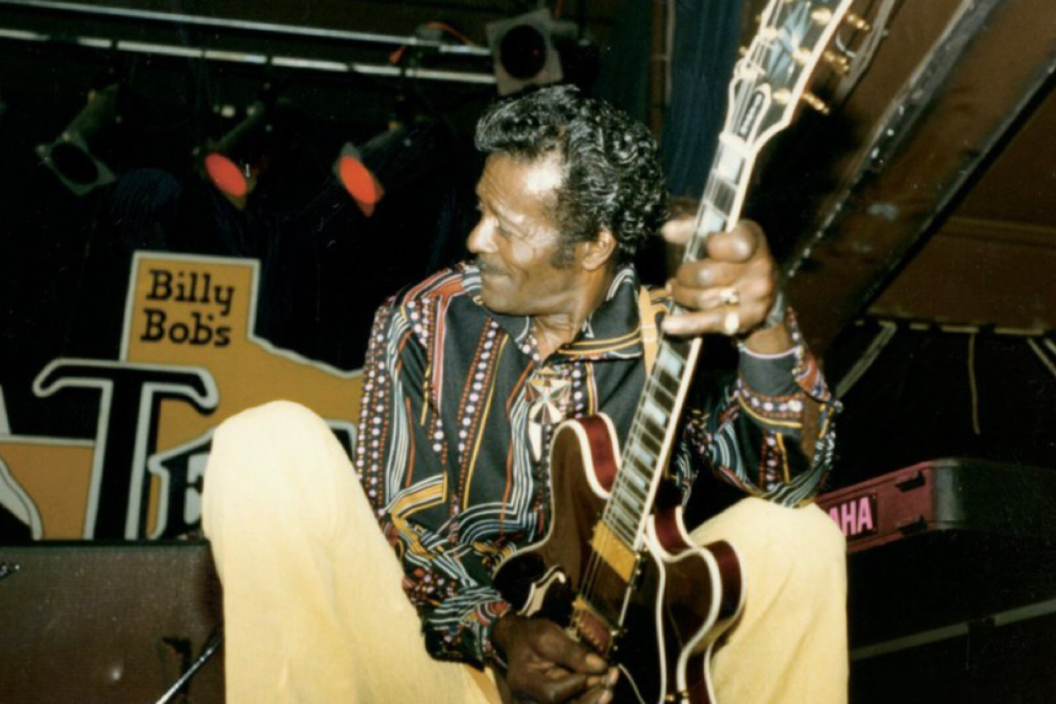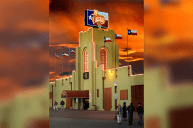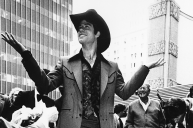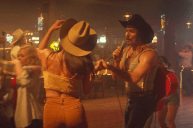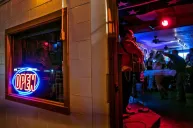In the center of the historic stockyards in Fort Worth, Texas, there is a place that encapsulates the larger-than-life spirit of the Lone Star State and serves as a haven for fans of country music and Western cowboy culture. That place is the incomparable Billy Bob's Texas — "The World's Largest Honky Tonk."
Country music is famous for its historic venues where country legends started their careers. In Nashville, Tenn., those hallowed places include Tootsie's Orchid Lounge, Robert's Western World, and of course, the Ryman Auditorium. In Texas, that place is unequivocally Billy Bob's.
Those who visit Billy Bob's Texas enjoy a honky tonk experience that can't be replicated anywhere else in the world. Patrons are first greeted by the club's impressive front facade featuring an Art Deco-style tower with three Texas flags on each side. The large "Billy Bob's Texas" neon sign is perched at the top. Upon entering the venue, fans are welcomed by the glow of countless neon lights, the sparkle of the rhinestoned saddle disco ball, the sound of the high-energy dance band and the sight of cowboy hat-clad line dancers.
The Ultimate Honky Tonk Experience
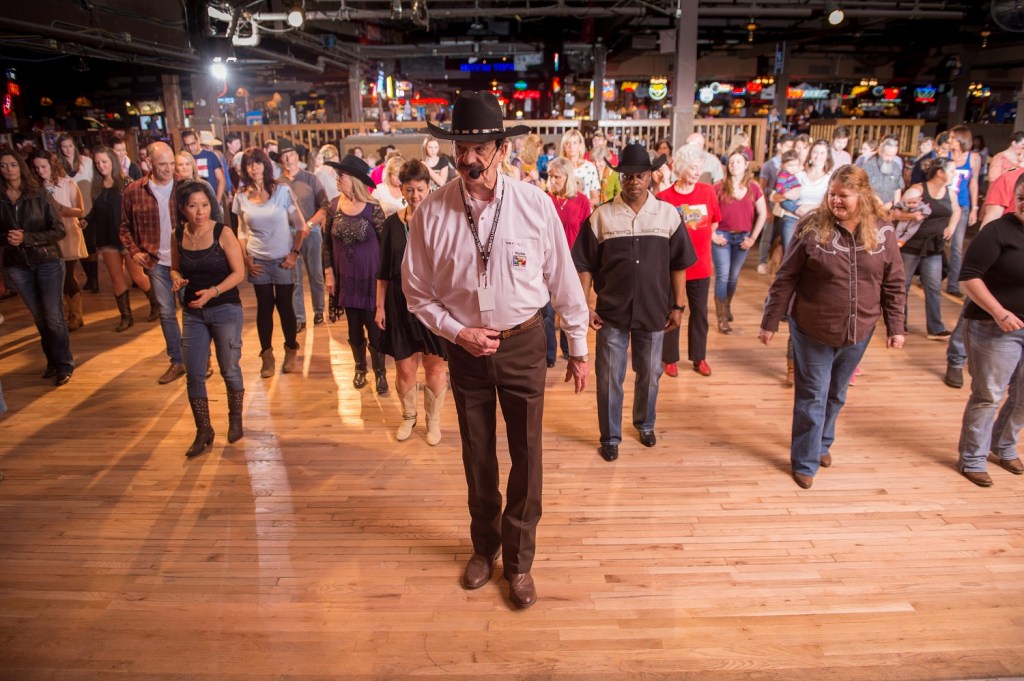
Visit Fort Worth
Billy Bob's Texas features 127,000 square feet of cowboy heaven, with one of the most unique features being an indoor bull riding ring. The bar is also a top-tier concert venue where country music's greatest artists, such as Willie Nelson, Johnny Cash, George Jones, Waylon Jennings and more, have performed. Acclaimed artists from other genres, such as ZZ Top and B.B. King, have also stepped foot on the Billy Bob's Texas stage, and the club has long served as a launching pad for Texas country artists. Many of these artists have their names, and handprints, enshrined in the club forever on the Wall of Fame.
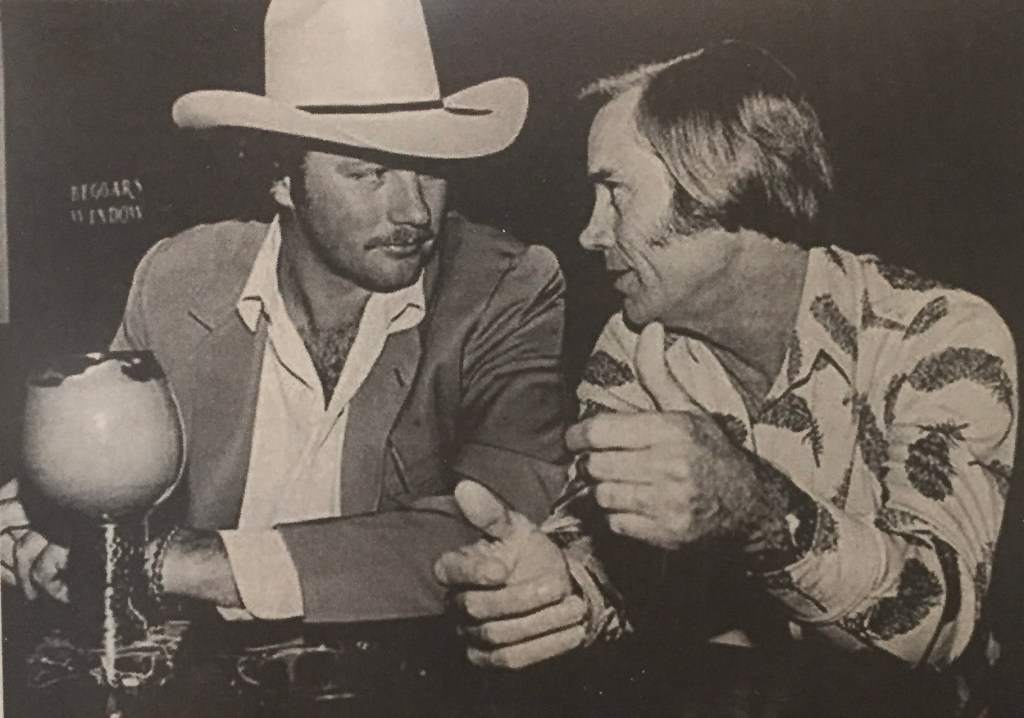
Billy Bob Barnett with George Jones/ Courtesy of Billy Bob's Texas
Suffice it to say, Billy Bob's is a Texas staple that has greatly influenced country music and the community of Fort Worth, but how did the honky tonk become what it is today? That history goes back to the early 1900s.
The building Billy Bob's Texas calls home was built in 1910 and first used as an open-air cattle barn, housing cattle for the Fort Worth Stock Show. It was enclosed in 1936 and the front tower was built. Then, during WWII in 1943, the building was converted into an airplane factory. Its final use before it became Billy Bob's was as a department store.
In 1980, the building was bought by Billy Bob Barnett, founder of Billy Bob's Texas. As an entrepreneur with a background in entertainment and beer distribution, Barnett bought the building with a vision of a honky tonk that would feature "Willie on one end and bull riding on the other." Billy Bob's was established during the Urban Cowboy-induced country music craze of the early 1980s, and Barnett even visited Gilley's, the Pasadena, TX bar behind the 1980 flick, for inspiration.
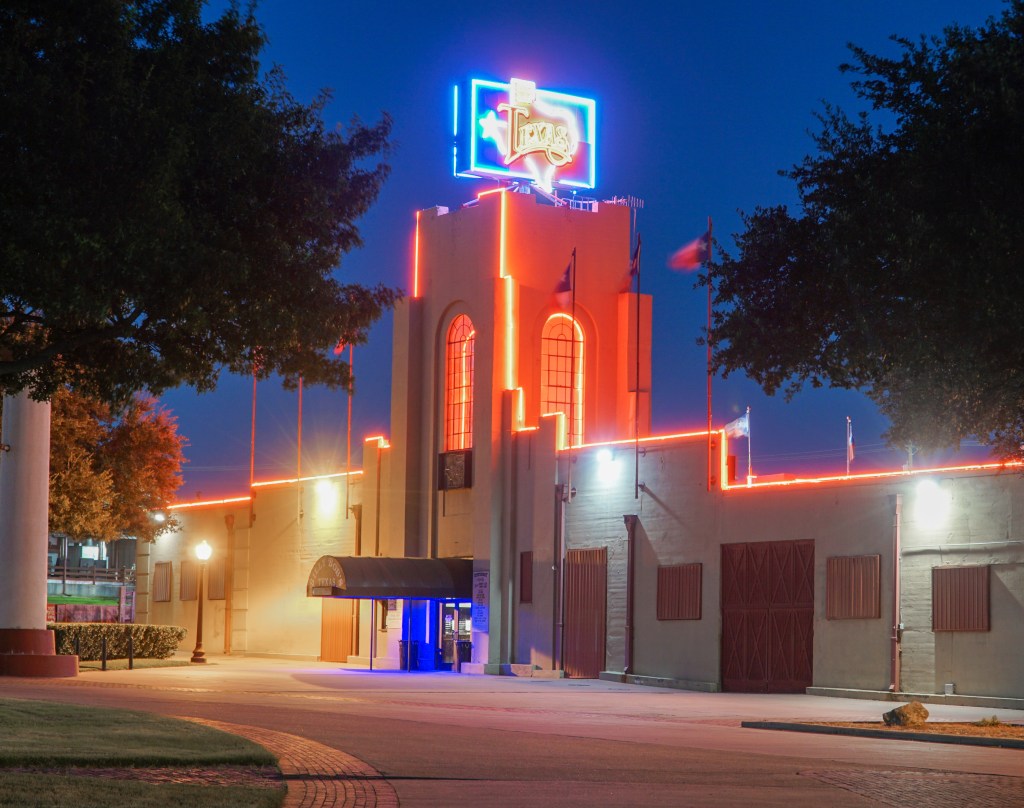
Visit Fort Worth
Although Barnett had big dreams for the space that would soon become Billy Bob's, plenty of work lay ahead of him. Barnett tells Wide Open Country that the building still featured echoes of its past use as a cattle barn when he bought it.
Billy Bob Barnett, founder of Billy Bob's Texas: "It'd been run down. It had a slanted floor, and we had to level the top part. You don't recognize it, but it kind of slants down to the right. It drops 12 feet from the rodeo arena down to the end, so it was a big slanted floor. It was built like that for a cattle barn so the manure would run off."
Barnett scheduled the opening day for April 1, 1981, and he did so for a specific reason: if they didn't meet their deadline, he could simply say, "April fools!"
"That wouldn't have worked, but it sounded good," jokes Barnett.
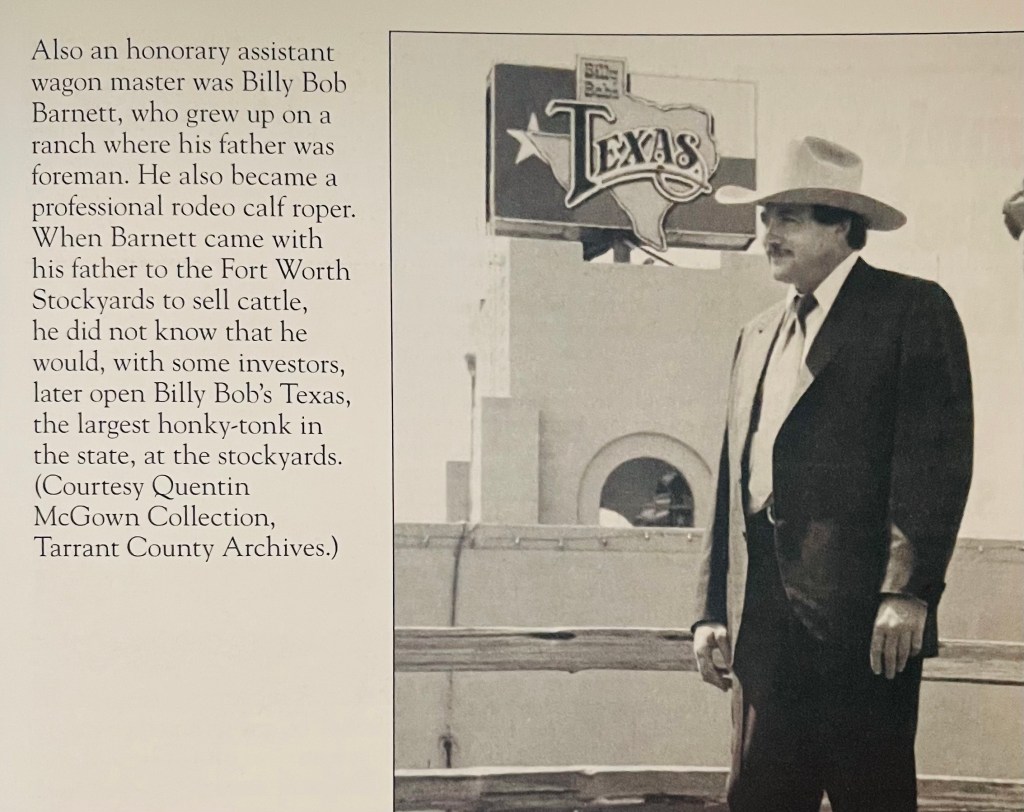
Courtesy of Billy Bob's Texas
So, Barnett got to work. He and partner/manager Spencer Taylor and a crew of 80 people—including cowboy friends of his—transformed the place from the top down. The renovation didn't come without its hurdles, however. At times, Barnett says, the process felt a bit like "running the titanic... after they hit the iceberg."
One of Barnett's longtime friends who helped with the early development of Billy Bob's Texas was Hub Baker, who also ran the club's dry goods store. He recalls aiding in the renovation project.
Hub Baker: "We just did it in the rustic look all the way around. Bars everywhere, dance floors, they were all level and straight, and the highest part in there is the perfect room for a little bull arena. Put that in there and it seats about 2 or 300 people."
Creating the indoor bull riding arena was one aspect of the bar that required a certain expertise. Gilley's bar had a mechanical bull, but Barnett's vision for his bar was "real bulls, not steel bulls." To meet this task, Barnett brought in legendary rodeo and bull riding stars Jim Shoulders and Neil Gay to help design the arena. Billy Minick, former cowboy, rodeo producer, stock contractor and now-President of Billy Bob's Texas, was later hired to run the bull riding ring.

Courtesy of Billy Bob's Texas
Pam Minick, Marketing Director at Billy Bob's Texas: "The bull riding alone is just like putting on a rodeo. You've got to have the announcer, you've got to have the clowns, you have to have the livestock, you've got to have the contestants and the prize money and do it safely. [Billy] was there from ground zero on that."
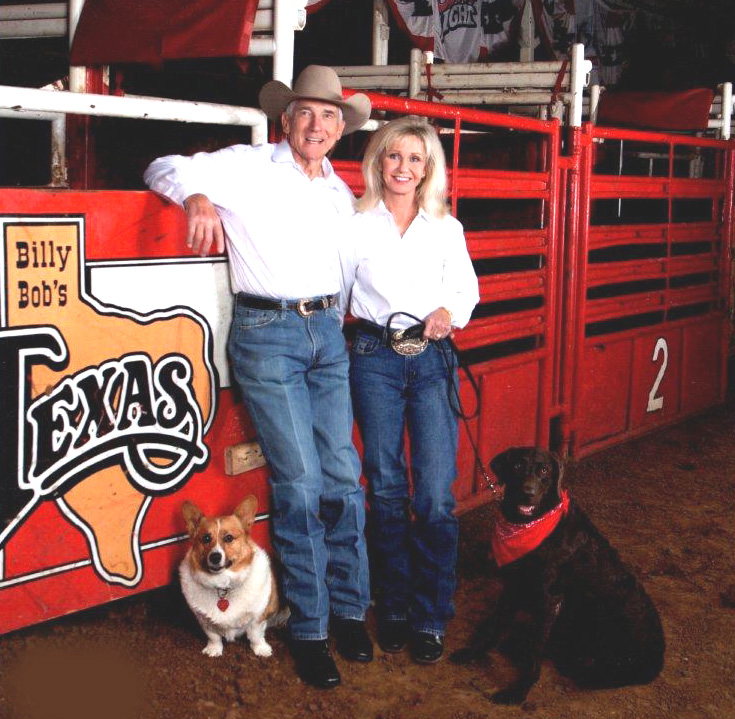
Billy and Pam Minick/ Courtesy of Pam Minick
Another important item Barnett had to cross off his list was choosing a name for his soon-to-be honky tonk. Barnett says he considered naming the bar after Texas musician Jerry Max Lane, but Darrell Royal, longtime head football coach for the University of Texas and friend to Barnett and Willie Nelson, suggested "Billy Bob's Texas." Although the name is often shortened to "Billy Bob's," Barnett maintains that "Texas" is the authentic name of the club.
Only in Texas
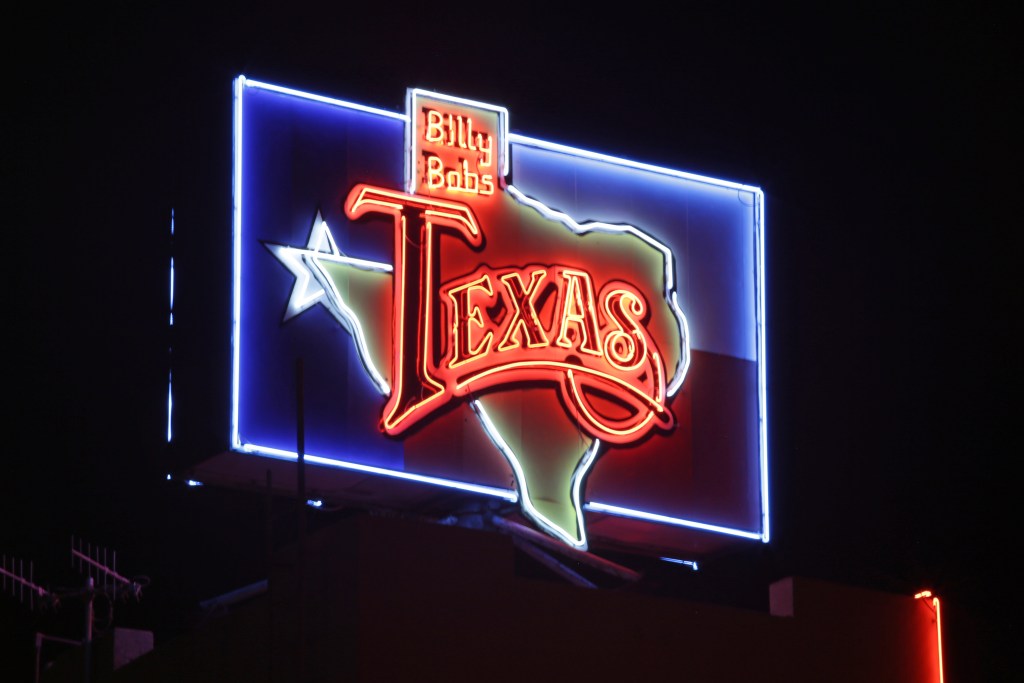
Visit Fort Worth
Billy Bob Barnett: "The real name was just Texas, and then we just stuck our name up there to make it different. It's always Texas. It's Texas throughout."
Despite the daunting nature of the renovation, Barnett and his crew made their April 1, 1981 deadline, and opening night was a hit. What was supposed a VIP-only event turned into a massively popular affair due to the sheer anticipation people had for the opening.
Hub Baker, on the club's opening night: "It was what I like to call a Hollywood zoo. They had every news [channel] in the world. ABC, CBS, NBC. . . it was big time."
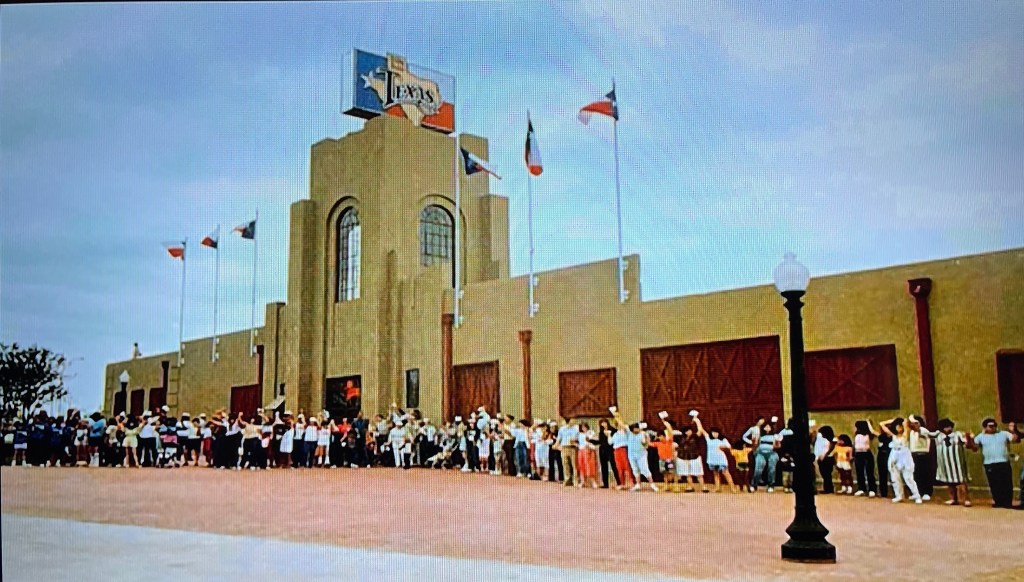
Courtesy of Billy Bob's Texas
According to Barnett and others, the local fire marshal even had to come to change the building's capacity to 6,000 people to allow for the crowd. Billy Bob's longtime Entertainment Director Robert Gallagher, who began booking house bands for the bar in 1981, also remembers the excitement of that first night.
"It was a big hit, and fire marshals were everywhere," he says. "It got to the point where it was one in, one out. There were hundreds of people waiting to get in, and it was an insane night."
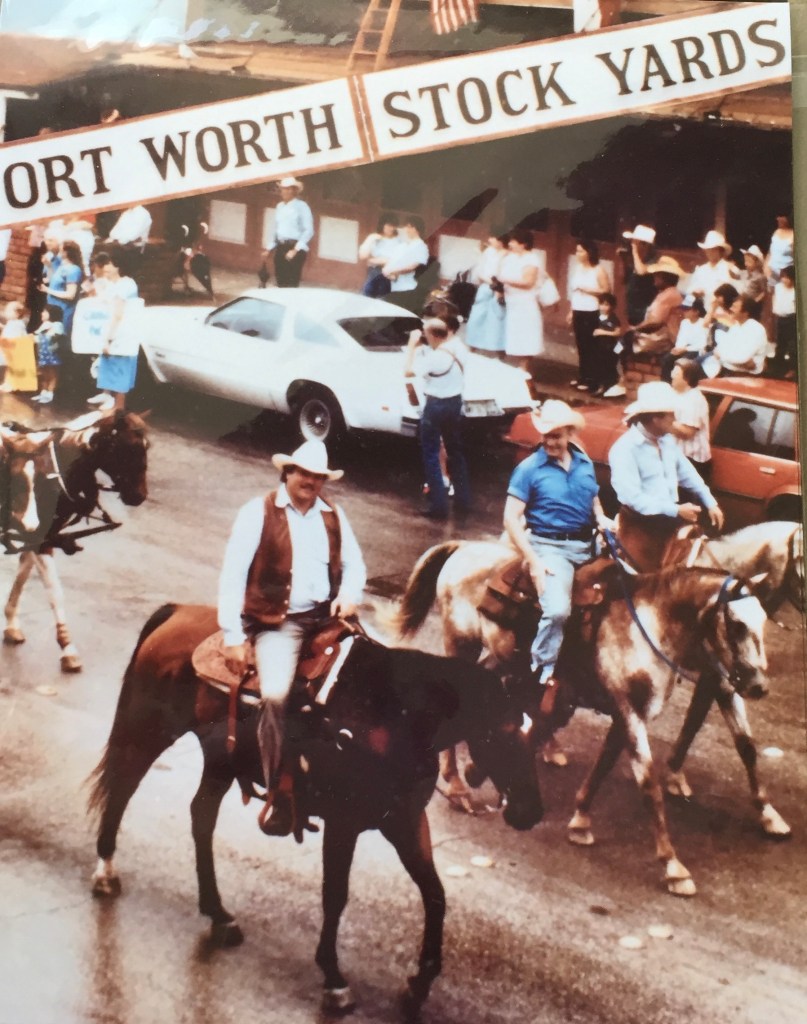
Billy Bob's Texas
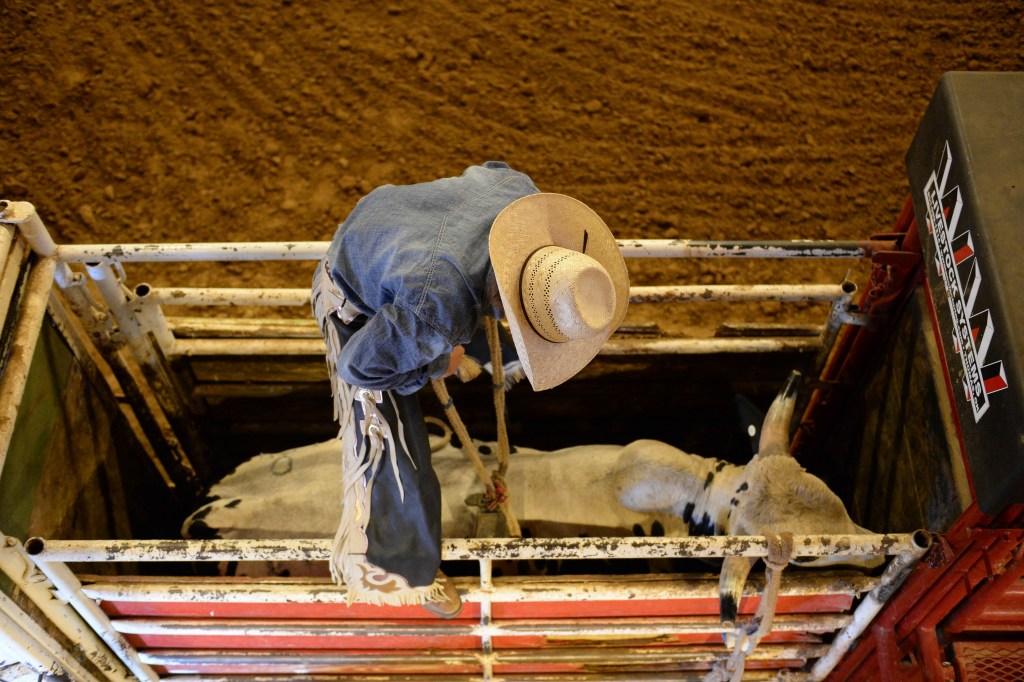
Visit Fort Worth
The first-ever band to take the stage on that April 1 opening night was Larry Gatlin & The Gatlin Brothers, who had seen recent hits with "All the Gold in California," "Take me to Your Lovin' Place" and more.
Larry Gatlin, country and gospel singer-songwriter: "We were hotter than a match, as Coach Royal used to say, another good Texan by way of Oklahoma. Hotter than a match."
Rudy Gatlin, country and gospel artist: "It was a big ol' party. Everybody was having a large time. That was right during the crazy years; everybody was crazy. We were living large. Country music was exploding and having a good run. We were having a good run. Everything was like, 'Wow, this is really something.' So, we lived it up like there was no tomorrow."
The Gatlin Brothers would go on to play Billy Bob's many times throughout their career, and they even returned to perform at the club's 40th Anniversary in April 2021.
The opening weekend was rounded out by Waylon Jennings (April 2 & 3), Janie Fricke (April 4) and Willie Nelson (April 5 & 6). According to Barnett, the first few months of the club's existence continued along this star-studded trajectory with performances from Hank Williams Jr., Alabama, Charlie Pride, Chuck Berry, Tina Turner and more.

Billy Bob Barnett with Waylon Jennings/ Courtesy of Billy Bob's Texas
Billy Bob Barnett: "We were booking acts just solid. No one had done that before.
Larry Gatlin: [Barnett] "filled a niche that nobody had ever filled before...It makes me smile, and every time I go in it, I go, 'Good Lord, this would only happen in Texas."
The first few years of Billy Bob's Texas were full of legendary moments. The club won its first ACM Award for Club of the Year just one year after it opened. In May of 1982, George Strait, the yet-to-be-crowned "King of Country Music," made his Billy Bob's debut as an opener for Billy Joe Shaver. In the spring of 1983, Merle Haggard broke the Guinness Book of World Records for the biggest round of drinks ever purchased when he bought 5,095 one-ounce drinks at a price of $12,737.50.
Billy Bob Barnett: "Everybody was having a good time, we'll put it that way."
Hub Baker: "It was a ball, man. It couldn't be anything but fun. Every night was something unique and different. . . It was the place, and it still is."
Billy Bob's Texas saw great success for almost seven years, but it came to a temporary halt in January 1988 due to the Savings and Loans Crisis. The club went bankrupt (as did many other businesses) and the doors were closed. It didn't stay down for long, however, and it was reopened in November of that year under a new partnership consisting of Holt Hickman, Don Jury, Steve Murrin and Billy Minick.
Billy Minick rejoined as the head of day-to-day operations, and it was also during this time that Pam Minick became the Marketing Director and Gallagher was hired as the full-time Entertainment Director. According to Pam Minick, the bar's reopening was aided by the beginnings of '90s country with popular acts like Garth Brooks and Clint Black reigning on the charts.
A New Era
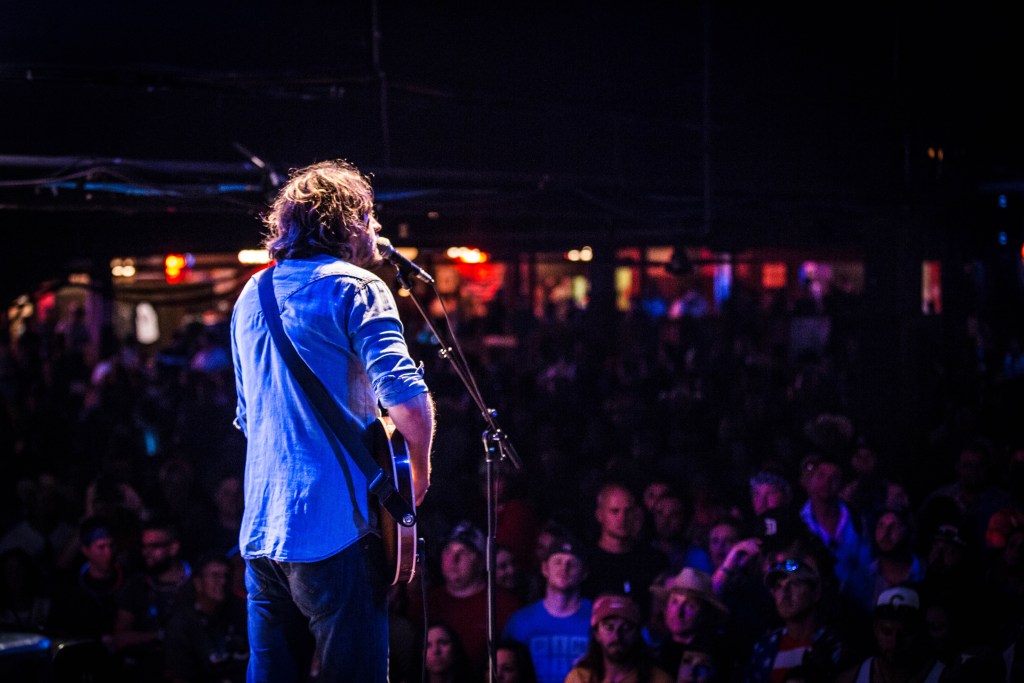
Visit Fort Worth
More legendary memories were made during this new era of Billy Bob's. Garth Brooks played his first show there in August 1989 to a crowd of 500 people for five dollars per ticket. Alan Jackson's 1990 performance inspired him to write the song, "Dallas." Billy Ray Cyrus played a sold-out show during the height of his smash hit, "Achy Breaky Heart," in 1992. Other '90s country fixtures such as Shania Twain, Tim McGraw and Kenny Chesney also made stops there.
It was also during the 1990s that the staff was expanded with the addition of Marty Travis, who quickly became General Manager (and still is today). With a background in marketing and entertainment, Travis implemented many systems that made Billy Bob's business more efficient. Travis says one of his biggest goals throughout his career has been to create the best possible experience for customers.
Marty Travis, General Manager: "My boss told me one time, he said, 'You've got to remember that every day we're creating memories for people, good or bad. They're gonna walk away and tell their friends they had a great time at Billy Bob's or Billy Bob's sucks. So, I just tried to make sure that they had a great time, and I was empowered to make those decisions."
Not only has Billy Bob's Texas served as a place where legends reign, but it also became a place where new artists, especially young Texas artists, earn their stripes. In 1998, then-new Texas artist Pat Green became the first musician to record a Live at Billy Bob's Texas album—an ongoing series that has featured albums from Merle Haggard, Willie Nelson, The Charlie Daniels Band and many more.
Unsurprisingly, Billy Bob's soon became a must-play venue for up-and-coming artists. One such artist was Randy Rogers of the Randy Rogers Band, a Texas-born musician who grew up hearing about the mystique of the venue, and, on some occasions, experienced it for himself.
Randy Rogers, country artist: "The stockyards in general were a hub of music, and I think it's okay to talk about this now, but we had fake IDs. We would sneak out and go up to PR's and some of the other bars around Billy Bob's and get into trouble. It was kind of a part of life. It was definitely a big deal."
And the Fort Worth honky tonk wasn't just a fun place to hang out with friends. For a young Rogers, performing there would prove to be the pinnacle of his early music career.
"There were some local musicians that I looked up to and national artists that I looked up to that played Billy Bob's," he says. "My parents told me when I was 12 or 13 years old when I started trying to write songs and trying to play our little Opry houses and stuff that Billy Bob's was the benchmark. If I could play Billy Bob's, I made it."
Rogers would soon do just that. The first time he stepped on the Billy Bob's stage was as an opener for Cross Canadian Ragweed in the early 2000s. When he and his band finally got the invitation to headline, he drove all night from his tour stop in Colorado to make it there, and his parents — who helped ignite his Billy Bob's dream — were there to witness it. Now, Rogers is a staple of Billy Bob's just as the bar itself is a staple of Texas. His name is on the wall, and the likenesses of himself and fellow Texan Wade Bowen are painted in a mural.
"To me, it's the Ryman of Texas. It's the Mother Church of honky tonks," he says. "It's where legends have played, it's where up-and-comers have gotten their start. It's where people travel from all over the country to go in and take a look at it and are just in awe of it. It's amazing, and it's still that way."
'Honky Tonk Street Cred'
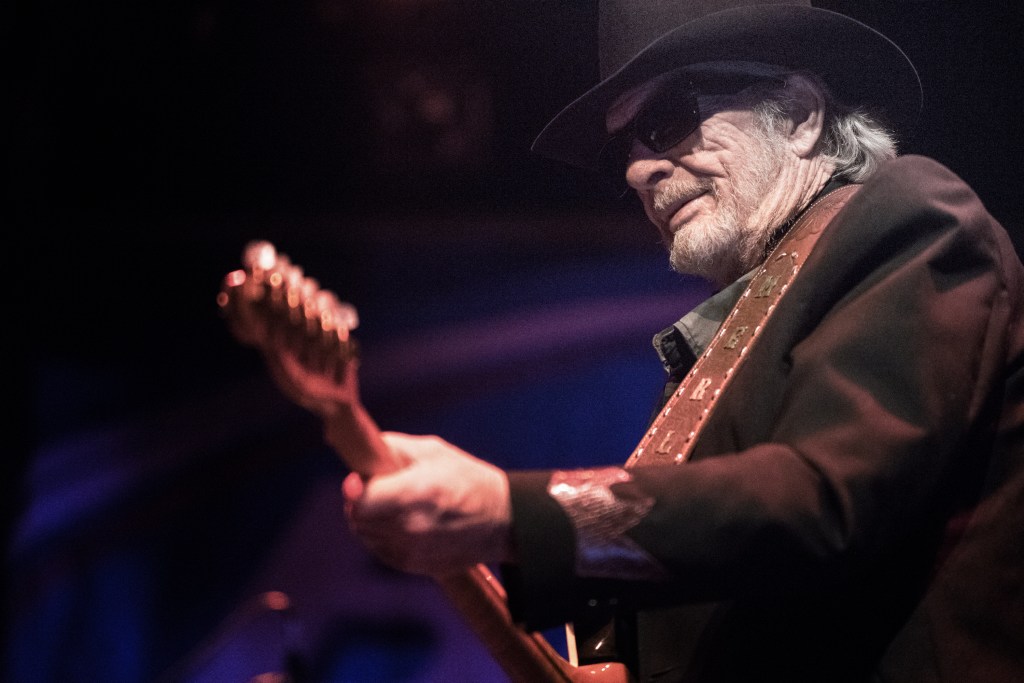
Merle Haggard performs a 4th of July concert at Billy Bob's, 2015 in Fort Worth, Texas. (Photo by Mike Brooks/DAL/Voice Media Group via Getty Images)
As Rogers alludes, not much has changed inside Billy Bob's in the past 41 years. They've updated their ticketing system, they've implemented new technology (such as informational QR codes on the Wall of Fame) and they recently removed poles in the showroom for better visibility of the stage. After all these years, however, the honky tonk still remains true to tradition, providing a window into authentic Texas cowboy culture. Those who hold the reins at the legendary venue are committed to keeping it that way.
Marty Travis: "The tradition of what Billy Bob's is all about is of the utmost importance. We have to keep everything legitimately as honky tonk as we can. We've made a lot of changes . . . but what I cannot do is I cannot make the place too slick. If we make it too slick, we've lost our honky tonk street cred."
Pam Minick agrees, saying she, Billy Minick and Travis have committed to preserving "the past, the present and the future" of the club. As for Barnett, he says he is proud of where the new owners and managers have steered Billy Bob's Texas.
Billy Bob Barnett: "It's essential," Barnett says of holding true to the history of Billy Bob's. "Marty and Billy Minick have always kept it like it used to be, like it opened. It really hasn't changed much since it opened. Marty's made it more of a museum, and I think that's good too because that brings back the authenticity and the history. It's all about the history of Texas and the history of the stockyards."
